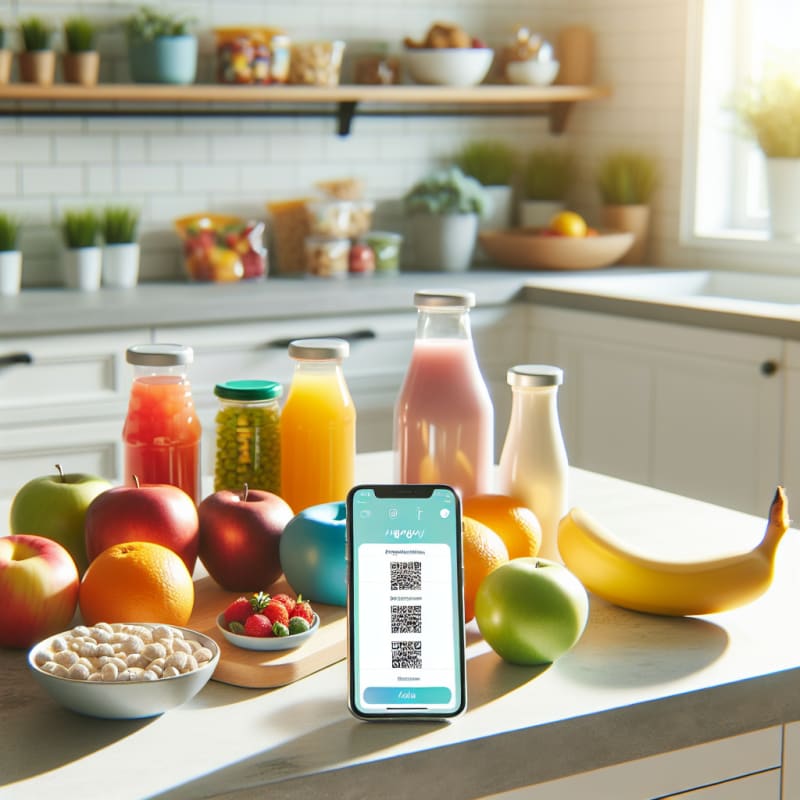Scan Your Food For E Numbers – Here’s How
Understanding food additives is crucial in today’s global marketplace. This guide explores the practical tools and regulatory frameworks that empower consumers to scan their food for E numbers and make informed choices.
Why Scan Your Food for E Numbers?
Food additives, known as E numbers in Europe, are ubiquitous in processed foods. They serve essential functions: preserving freshness, enhancing flavor, and improving texture. However, some additives raise health concerns, especially for individuals with sensitivities, allergies, or dietary restrictions.[1] The ability to scan your food for E numbers empowers consumers to avoid unwanted substances and comply with personal or medical dietary needs.
- Food sensitivities: Some E numbers trigger reactions in sensitive individuals.
- Dietary preferences: Vegans, vegetarians, and religious diets may restrict certain additives.
- Global differences: Labeling laws and permitted additives vary between countries.
What Are E Numbers?
E numbers are codes for substances approved as food additives by the European Food Safety Authority (EFSA). Each code identifies a specific additive, such as E100 for curcumin (a coloring agent) or E621 for monosodium glutamate (MSG). In the U.S., additives are listed by name, but the Food and Drug Administration (FDA) maintains a similar regulatory approach.[2]
| E Number | Name | Function | Regulatory Status |
|---|---|---|---|
| E100 | Curcumin | Coloring | Approved (EU/US) |
| E200 | Sorbic Acid | Preservative | Approved (EU/US) |
| E621 | Monosodium Glutamate | Flavor Enhancer | Approved (EU/US) |
| E951 | Aspartame | Sweetener | Approved (EU/US) |
Key takeaway: E numbers provide a standardized way to identify additives, but not all countries use the same system or permit the same substances.
How to Scan Your Food for E Numbers – Here’s How
Modern technology has made it easier than ever to scan your food for E numbers. Whether you’re shopping in-store or reviewing your pantry, several solutions help you identify additives quickly and accurately.
1. Use a Food Scanner App
Apps like Food Scan Genius allow users to scan product barcodes and instantly retrieve ingredient lists, including E numbers. The app cross-references regulatory databases and provides detailed information on each additive.[Food Scan Genius]
- Instant results: Scan the barcode and see E numbers highlighted.
- Personalized alerts: Set dietary preferences (e.g., gluten-free, vegan) to flag problematic additives.
- Global database: Includes US and EU regulatory info for travelers and expats.
“I have celiac disease, so scanning for E numbers is essential. Food Scan Genius makes shopping stress-free and keeps me safe.”
— Anna K., Berlin
Download Food Scan Genius to start scanning your food for E numbers today.
2. Manual Label Reading
Most packaged foods list additives in the ingredients section. In the EU, you’ll see codes like E330 (citric acid); in the US, names such as “citric acid” are used. Comparing labels is vital for international products.
- Tip: Look for bolded or capitalized additives, which may indicate allergens or regulated substances.
- Challenge: Some additives have multiple names or synonyms, making manual scanning less reliable.
3. Online Databases
Resources such as the EFSA Additives Database and FDA Food Additives Overview provide searchable lists of approved substances, their functions, and safety assessments.[3]
Comparing Labeling Laws: US vs EU
Labeling laws differ significantly between the United States and European Union, impacting how consumers scan for E numbers.
| Aspect | United States (FDA) | European Union (EFSA) |
|---|---|---|
| Identification | By additive name (e.g., “sodium benzoate”) | By E number (e.g., “E211”) |
| Mandatory Labeling | All additives must be listed by name | All additives must be listed by E number or name |
| Regulatory Authority | FDA | EFSA |
| Permitted Additives | Some differences in approval (e.g., certain colorants) | EFSA maintains a unified list for all member states |
For travelers and importers, understanding these differences is crucial. A product approved in the EU may contain additives not permitted in the US, and vice versa.[NY Times]
Health Implications of E Numbers
Most food additives are considered safe by regulatory authorities when used within prescribed limits.[3] However, ongoing research and news coverage highlight potential risks associated with certain E numbers:
- Allergic reactions: Sulfites (E220–E228) and artificial colorings may trigger symptoms in sensitive individuals.
- Behavioral concerns: Some studies link artificial colors to hyperactivity in children.[BBC News]
- Long-term effects: Emerging research investigates links between additives and chronic conditions.[Scientific American]
Consumers are advised to stay informed and consult reputable sources for updates on food additive safety.
Food Scan Genius: A Solution for Sensitive Consumers
Food Scan Genius stands out as a comprehensive solution for scanning food for E numbers. The app is designed for people with allergies, intolerances, or dietary preferences, offering:
- Real-time scanning: Instantly detect E numbers and flagged additives.
- Personalized profiles: Set alerts for gluten, lactose, vegan, kosher, or halal restrictions.
- International compatibility: Supports US and EU labeling standards, ideal for travelers and expats.
- Scientific backing: Regular updates from FDA, EFSA, and peer-reviewed journals.
Recent news coverage in Forbes highlights how AI-powered scanners like Food Scan Genius are revolutionizing food safety and transparency.
“As a vegan, I rely on Food Scan Genius to avoid hidden animal-derived additives. It’s a must-have for anyone serious about their diet.”
— David L., London
Try Food Scan Genius and experience hassle-free food scanning.
Q&A: Common Questions About Scanning for E Numbers
What are the most common E numbers to watch for?
The most frequently encountered E numbers include preservatives (E200–E299), colorings (E100–E199), and flavor enhancers (E620–E640). Some, like E621 (MSG), are controversial and may be avoided by sensitive individuals.
Is scanning for E numbers necessary if I have no allergies?
While not strictly necessary, scanning for E numbers can help you avoid unwanted additives, comply with dietary preferences, and stay informed about emerging health research.
Can I scan food for E numbers internationally?
Apps like Food Scan Genius support multiple regulatory frameworks, making it possible to scan products in both the US and EU. Always check local labeling laws for accuracy.
Are E numbers always harmful?
No. Most E numbers are rigorously tested and considered safe within prescribed limits. However, some individuals may experience adverse reactions or prefer to avoid certain additives for personal reasons.
Conclusion: Empowering Consumers Through Ingredient Transparency
In a globalized food market, understanding what’s in your food is more important than ever. Scanning for E numbers—whether manually or with apps like Food Scan Genius—enables consumers to make informed choices, protect their health, and honor their dietary preferences. Regulatory frameworks differ between the US and EU, but technology bridges the gap, offering clarity and confidence at the point of purchase.
Take control of your diet: Download Food Scan Genius and start scanning your food for E numbers today.
References
- FDA: Overview of Food Ingredients, Additives & Colors
- EFSA: Food Additives
- PubMed: Food Additives and Health
- NY Times: Europe Bans Some Additives Still Used in the US
- BBC News: Food Additives and Hyperactivity
- Scientific American: Food Additives – What You Need to Know
- Forbes: How AI Is Transforming Food Safety
Frequently Asked Questions
- How do I scan my food for E numbers using my smartphone?
- Download a food scanner app like Food Scan Genius, scan the barcode, and review the identified E numbers and flagged additives.
- Are E numbers the same in every country?
- No. The EU uses E numbers, while the US lists additives by name. Some substances are approved in one region but not the other.
- Can scanning for E numbers help with allergies?
- Yes. Scanning can quickly identify allergens and additives that may trigger reactions, supporting safe dietary choices.
- Is Food Scan Genius available internationally?
- Yes. The app supports US and EU labeling standards and is available for download worldwide.





